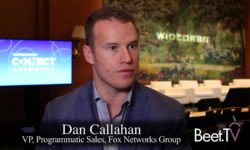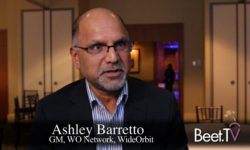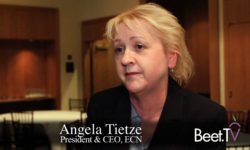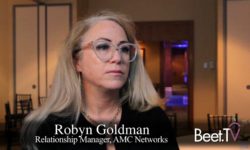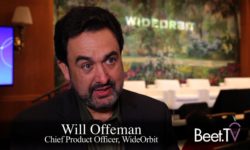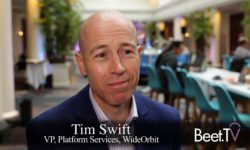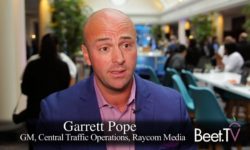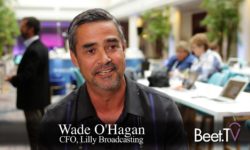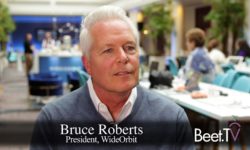SAN FRANCISCO – When WideOrbit was founded 18 years ago, the television universe was a whole lot simpler yet it was still too complicated at the local level. “There needed to be a solid foundation and system of record across the industry” that WideOrbit set out to create, says the company’s EVP of Engineering, Will Offeman.
Now with the convergence of linear TV and digital, WideOrbit finds itself at the nexus of change that media buyers and sellers are grappling with in one fashion or other, Offeman explains in this interview with Beet.TV at the annual WideOrbit Connect conference.
“Our entire programmatic effort is designed to make the buying and selling of local media easier,” Offeman says of WO Traffic. “We’re extending that local traffic system not just to be the outlet for their broadcast signal but also for all of their different digital outlets as well.”
The resulting solution is designed for WideOrbit’s clients to aggregate their content “both the linear reach as well as the digital reach so that the buy side can get an unduplicated reach number across the two. I think that’s going to add quite a bit of value to the local market.”
While local TV broadcasters tend to garner far fewer headlines than does the battle of the legacy network giants and digital upstarts, they’re not out of the ballgame, according to Offeman.
“For them to remain relevant, they’ve got to use the power that they have, which is that they can reach a very large local audience within, in digital terms, a geo fence or DMA, and hit them with messages on a really consistent, historically reach/frequency goal.”
Providing unduplicated reach means “basically giving them a message, not more than seven times, not burning them out, not giving it to them in the same pod each and every time. That’s some of things that local can do that digital’s really struggling with,” Offeman adds.
Aside from linear and digital convergence, big differences remain in the way that local TV and national networks ply their trade, according to Offeman. Local is still done by rate, cost per point and gross rating point goals, as opposed to national with its Upfront process, guarantees and CPM targets, among other dissimilarities.
“On the national cable net side, we are doing so many different things,” says Offeman, including working with the OpenAP audience targeting consortium to get custom audience segments into rate cards, developing direct response automation to reduce paper handling and making improvements to electronic copy instruction.
Like many others, Offeman would like to see more uniformity across the different types of TV buyers, including large brands, direct response, hybrid direct response and others.
“It’s not like it’s one clean buying strategy. Our customers need to be very flexible for where the money is coming in, what channel it’s coming in, and then how do they maximize their content.”
This video is part of a Beet.TV series on advanced TV produced at the WideOrbit Connect conference. WideOrbit is the sponsor of this series. Please find more videos here.







